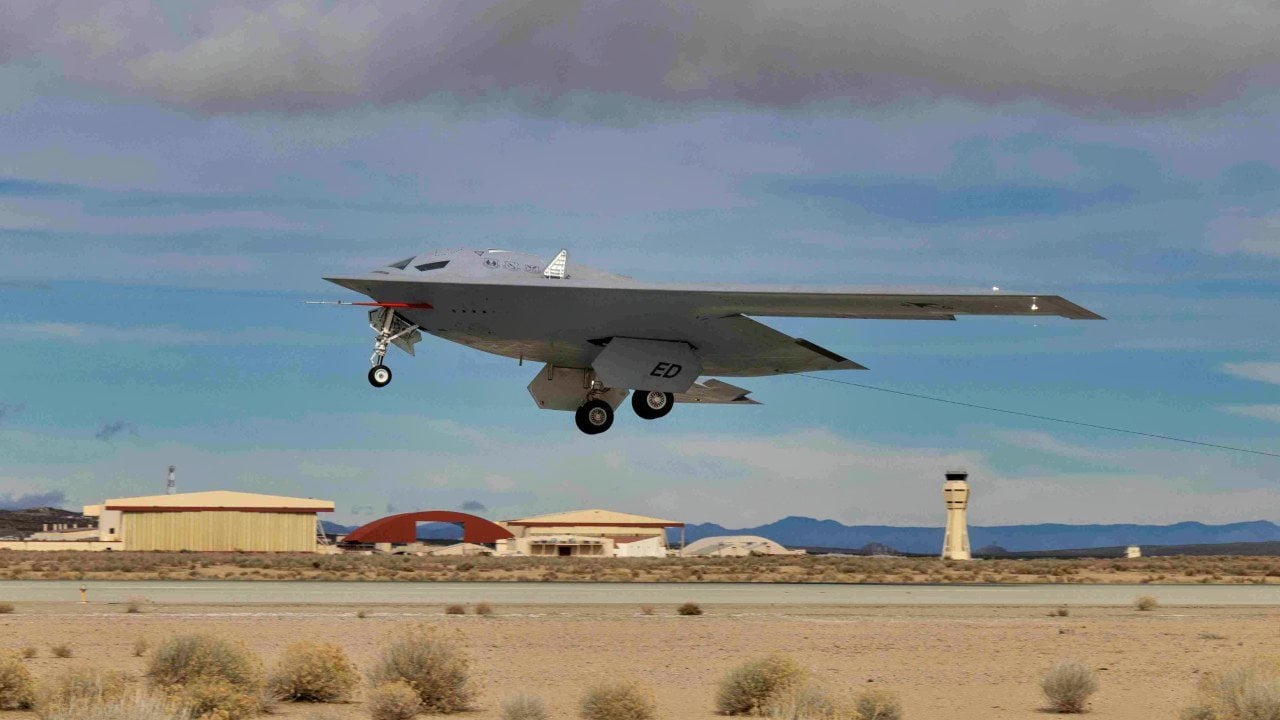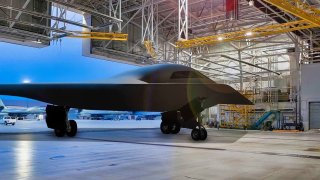The B-21 Nightmare Numbers Problem The Air Force Can't Fix
The U.S. Air Force anticipates having a limited number of B-21 Raider stealth bombers in service by 2030, potentially hindering its ability to counter China in a future conflict.
Summary and Key Points: The U.S. Air Force anticipates having a limited number of B-21 Raider stealth bombers in service by 2030, potentially hindering its ability to counter China in a future conflict.
-The B-21 is designed to replace aging bombers and provide advanced stealth capabilities, but current plans to acquire around 133 bombers by 2033 fall short of the estimated 300 needed.
-Cost constraints and historical underfunding of the Air Force contribute to this challenge, raising concerns about the adequacy of the U.S. bomber fleet in a rapidly evolving global security environment.
The B-21 Can't Win the Numbers Game Anytime Soon: Bomber Drama
Optimistically, the U.S. Air Force could have a couple dozen operational B-21 strategic bombers in service by around 2030.
This forecast was relayed this past September during the service’s annual Air Force Association convention. Since the Air Force’s bomber fleet today is perhaps the smallest it has ever been throughout the service’s history, even if this B-21 acquisition rate stays on trajectory, it may not be enough to make a difference in a possible future war with China.
Additionally, Chinese state media outlets have alluded that the true purpose behind the “Raider” bomber force will be to get Beijing to funnel huge sums of resources and time into development countermeasures for it.
As tensions continue to ramp up between Washington and Beijing, the quantity of B-21s that enter service will be just as significant as their quality.
B-21 Raider: An Overview Of The Air Force’s Newest Stealth Bomber
The impending B-21 Raider is designed to replace the Air Force’s aging Rockwell B-1 Lancer, Northrop Grumman B-2 Spirit, and Boeing B-52 Stratofortess. The Lancer is supersonic, using its top speed to evade adversarial anti-air capabilities.
Out of the three bombers, the Spirit is the most advanced – using stealth capabilities and a low radar cross-section to penetrate into enemy airspace. While all three airframes are considered to be quite formidable, the Air Force needs an even more cutting-edge platform that could outpace other nations’ developing stealth bomber programs. Specifically, Russia is building its PAK-DA airframe and China is working on its H-20 bomber.

As part of the Long-Range Strike Bomber program, the Raider sill serves as the Air Force’s long-range, stealth intercontinental strategic bomber, capable of delivering both conventional and nuclear weapons. The LRS-B program began back in 2011, and manufacturer Northrop Grumman was awarded the contract to develop the new airframe a few years later. Both Boeing and Lockheed Martin also submitted proposals for the new program, however, Northrop Grumman’s prototype was the most cost-effective.
What We Know About The Raider Program
According to a media report that circulated in 2015, the service also wants the upcoming B-21 to function simultaneously as an intelligence collection platform, interceptor, and battle manager. In terms of form, the Raider resembles the B-2 closely.
Both bombers utilize a flying wing design. However, rather than sporting the typical aircraft shape of a fuselage with wings, stabilizers, and a tail attached, the Raider looks more like one big wing. This unique configuration increased lift while reducing drag.
While many details surrounding the Raider remain hush-hush and highly classified, Northrop Grumman has provided several key attributes of the bomber. First and foremost, the B-21 will be a sixth-generation platform, equipped with open architecture that will enable quick upgrades down the line as newer technology emerges.
Additionally, the bomber will use agile software development and digital engineering tools to enhance the airframe’s sustainability.
Air Force leaders have also been clear that the Raider will be capable of flying unmanned missions and controlling small groups of ‘wingman drones” from the cockpit, similar to the service’s upcoming Next Generation Air Dominance (NGAD) program.
Will The Air Force Acquire Enough B-21 Airframes?
Although the Raider appears to be a powerhouse on paper, experts have argued that the Air Force would need at least 300 bombers in order to effectively engage China in a war. Today’s nominal bomber inventory of 141 B-52s, B-1s, and B-2s is obviously much smaller than this number. Additionally, the Pentagon’s current plan involves a bomber fleet of just 133 airframes by 2033.
During a panel discussion on the Raider earlier this year, director of future concepts and capability studies Mark Gunzinger really illustrated how a limited B-21 fleet would be detrimental to U.S. national security. In order to properly deter China from starting a war over Taiwan, the military will “have to bring precision plus mass over long ranges to strike a … landing wave, surface action groups and other targets that would be the core of China’s offensive strategy.”
One factor preventing the service from acquiring additional B-21s is cost. The Air Force has simply received less funds than the U.S. Navy and U.S. Army for many years. Even if and when this monetary discrepancy is rectified, it will take time for the service to build up its fleet again.
The Air Force’s past bombers were produced at a much higher rate than what is in store for the Raider. While previous airframes were cheaper to produce, they were also procured during a time when Congress and other administrations saw the imminent need for more bombers.
However, tensions are mounting in the South China Sea and as instability continues to plague the Middle East and Eastern Europe, the need for more Raiders should be a top priority for policymakers and military officials alike.
About the Author: Maya Carlin
Maya Carlin is an analyst with the Center for Security Policy and a former Anna Sobol Levy Fellow at IDC Herzliya in Israel. She has by-lines in many publications, including The National Interest, Jerusalem Post, and Times of Israel. You can follow her on Twitter: @MayaCarlin.
Image Credit: Creative Commons.


